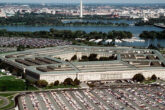October 12, 2022
Mind the Gap, Part 2: The Cross-Strait Potential of China’s Civilian Shipping Has Grown
This piece was originally published by War on the Rocks.
The Chang Da Long is a model of civil-military integration. Built in 2012 as a vehicle carrier, the ship has already demonstrated its ability to carry cars in its commercial capacity and tanks when participating in Chinese military exercises. This, presumably, is what its builders meant when they described it as having a “military heart” with a “civilian shell.”
In August 2021, I discussed how China’s civilian roll-on/roll-off car ferries and vehicle carriers could significantly enhance its ability to launch an amphibious assault on Taiwan. Having updated the numbers and looked more closely at how they translate into military potential, I believe the capacity of China’s civilian fleet is considerably greater and more threatening than it appeared at that time.
China’s civilian roll-on/roll-off vessel fleet enhances the immediacy and the complexity of the invasion threat facing Taiwan. Washington should start preparing now to counter it.
With tensions around Taiwan rising and Russia’s attack against Ukraine on everyone’s mind, analysts continue to debate whether China has — or at least thinks it has — the ability to successfully invade Taiwan. As I argued before, civilian ferries represent an underappreciated source of cross-strait sealift. This challenges the comforting assumption that the Chinese military is constrained by a lack of sufficient traditional amphibious assault ships.
In the past year, the size of China’s civilian ferry and vehicle carrier fleets has grown, and my research has identified additional civilian vessels that could be used for an amphibious invasion. Moreover, given how well-suited China’s roll-on/roll-off vessels are to the task of delivering personnel and vehicles across the Taiwan Strait, they could prove more effective militarily than many imagine. As a result, Washington should work with Taipei now to develop the survivable sea denial forces and rules of engagement that would be necessary to interdict an invasion fleet that exploits the full potential of China’s military-civil fusion.
Read the full article from War on the Rocks.
More from CNAS
-
DEFAERO Strategy Series [Apr 09, 25] CNAS' Becca Wasser and Phil Sheers on Revitalizing the U.S. Defense Industrial Base
On this episode of the Defense & Aerospace Report Strategy Series, sponsored by General Atomics Aeronautical Systems, Becca Wasser and Phil Sheers of the Center for a New Amer...
By Becca Wasser & Philip Sheers
-
From Production Lines to Front Lines
Executive Summary The U.S. defense industrial base (DIB) is struggling to meet the demands of the current strategic environment—let alone prepare for a potential conflict agai...
By Becca Wasser & Philip Sheers
-
The Pentagon’s Endangered Brain Trust
In this environment, sound assessments of emerging threats and new ideas to counter them will be especially vital....
By Dr. Andrew Krepinevich, Jr.
-
Siliconsciousness: The AI Competition: Public Policy Strategies: Part 1
This episode comprises the first part of our special event, “The AI Competition: Public Policy Strategies”. The event, co-hosted by MIT Technology Review, brings together some...
By Dr. ED McGrady




